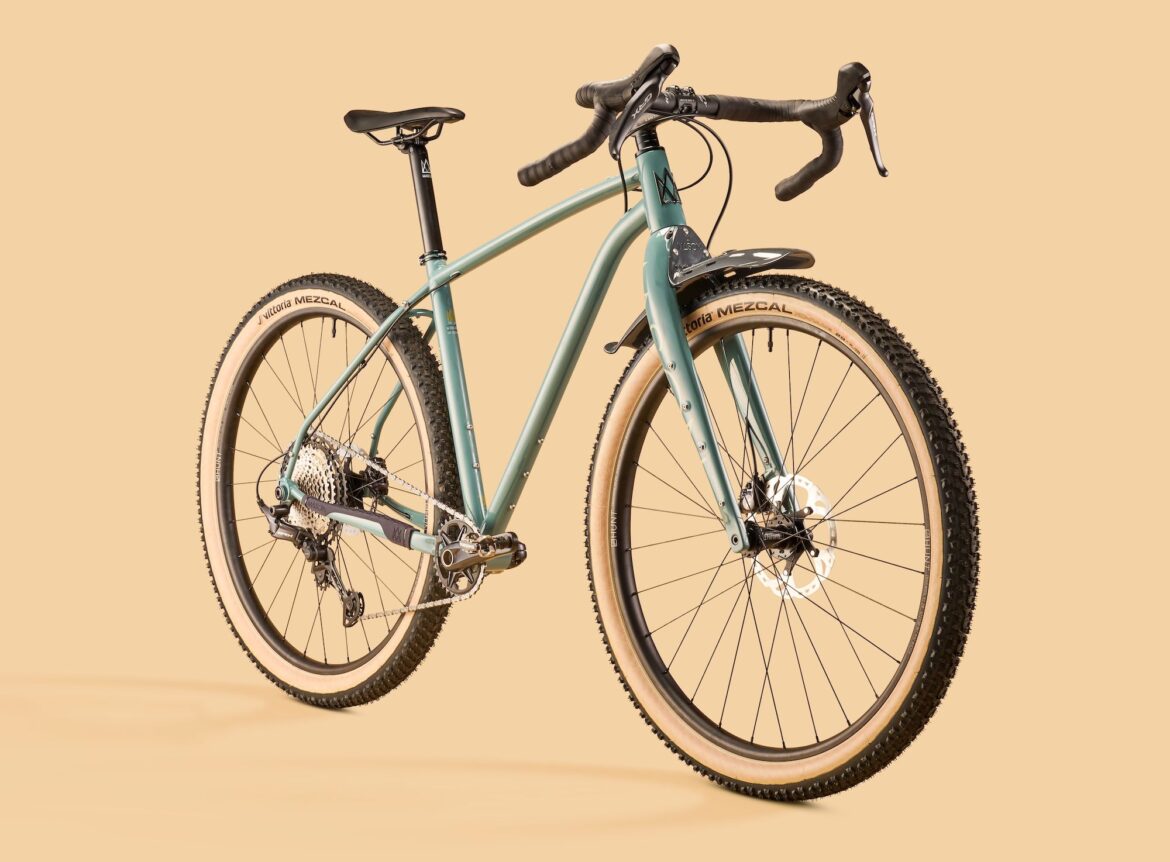After several weeks of riding, I’m still not entirely sure what to make of Mason’s ISO adventure/gravel bike. I’ve tested a few of the best gravel bikes over recent years and they’ve all been pseudo race bikes. Light weight carbon frames, v-section carbon wheels and a dialled in ride position similar to the road bikes I get to ride.
The ISO 2 is none of these things, and proudly so. This is a bike made for long-haul adventure. Ready to be loaded up and ridden far and wide over any terrain. An Italian-made steel frame with chunky 29” tyres, a ton of clearance and covered in mounting points – from the outset, this bike was always going to be a little bit different.
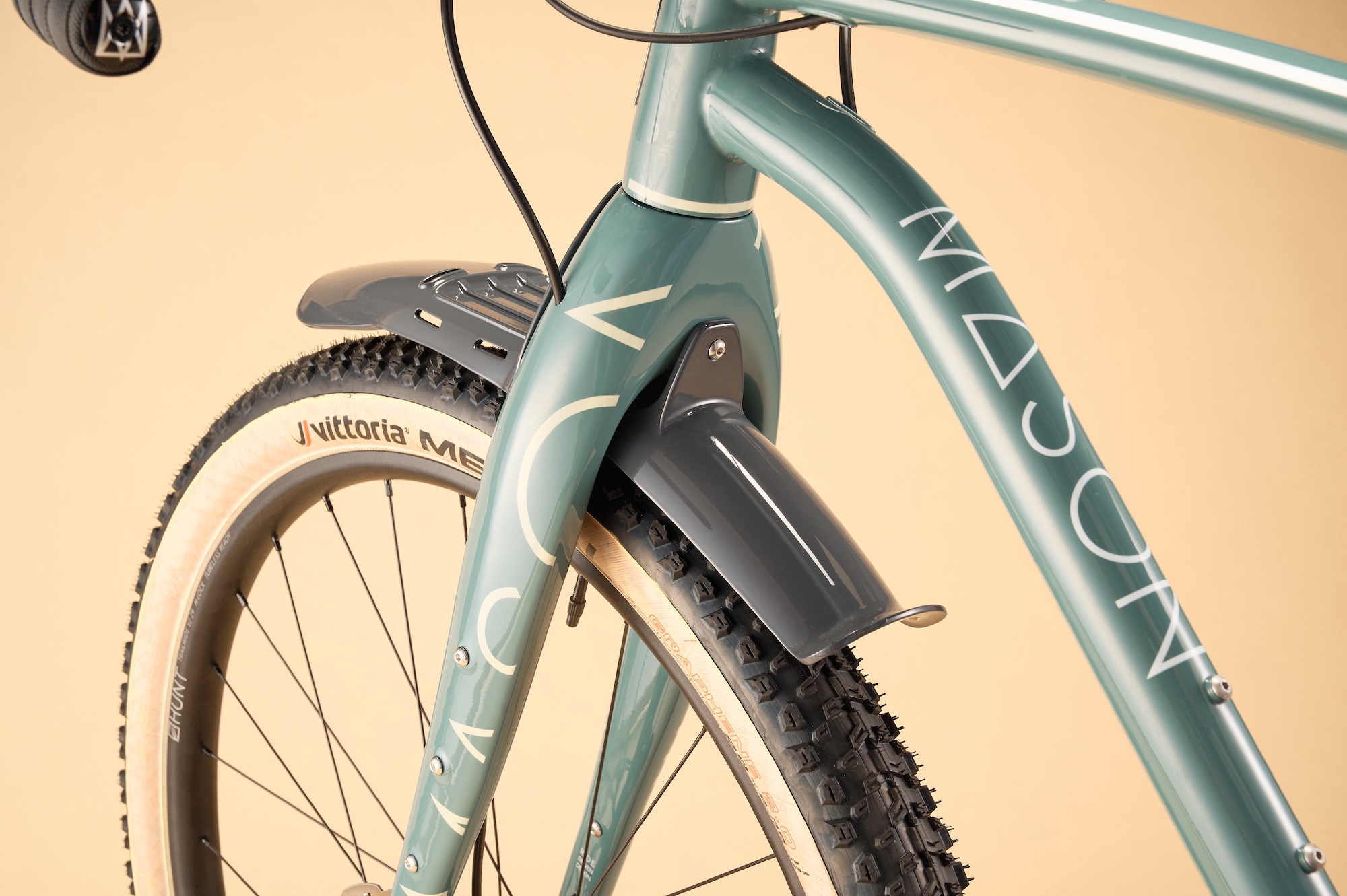
A steel bike with this geometry was always going to be something different
(Image credit: Future)
Mason ISO2 – Construction
First things first, this bike is big. Really big, and its geometry is nothing like a standard road or gravel bike. I tested the 50cm frame which had a bottom bracket that sits 27cm off the ground and a standover height at the centre of the top tube of 81cm. 90.3cm at the point it joins the headtube.
That’s almost the height of the handlebars on any road bike I ride. The centre of the saddle put by backside six centimetres higher in the air than the 54cm Specialized Tarmac I’m riding, and with a Tailfin aero pack on the back, I struggled to swing my leg over the saddle.
The top of the bars sit 101cm off the ground (10cm higher than my road bike) while the 51.5cm reach with less than one centimetre of drop from saddle to bars gives an upright riding position that also feels high off the road. While this took a little getting used to, it wasn’t unpleasant. It was easier on my back and neck, and strange as it might sound, probably slowed me down a little by forcing me to sit up. I spent more time looking around me, rather than hunching down and pushing on the pedals.
But it’s the wheels, perhaps even the tyres, that really standout. The 29-inch Vittoria Mezcals are mtb tyres, and they’re apparently taking the US gravel racing scene by storm. Their volume is another factor in raising this bike and the rider a long way off the ground. They role on Hunt Trailwide wheels that come with 30mm internal rim with and Boost hubs – the standard, wider axle designed to increase rigidity of 29” in MTB wheels.
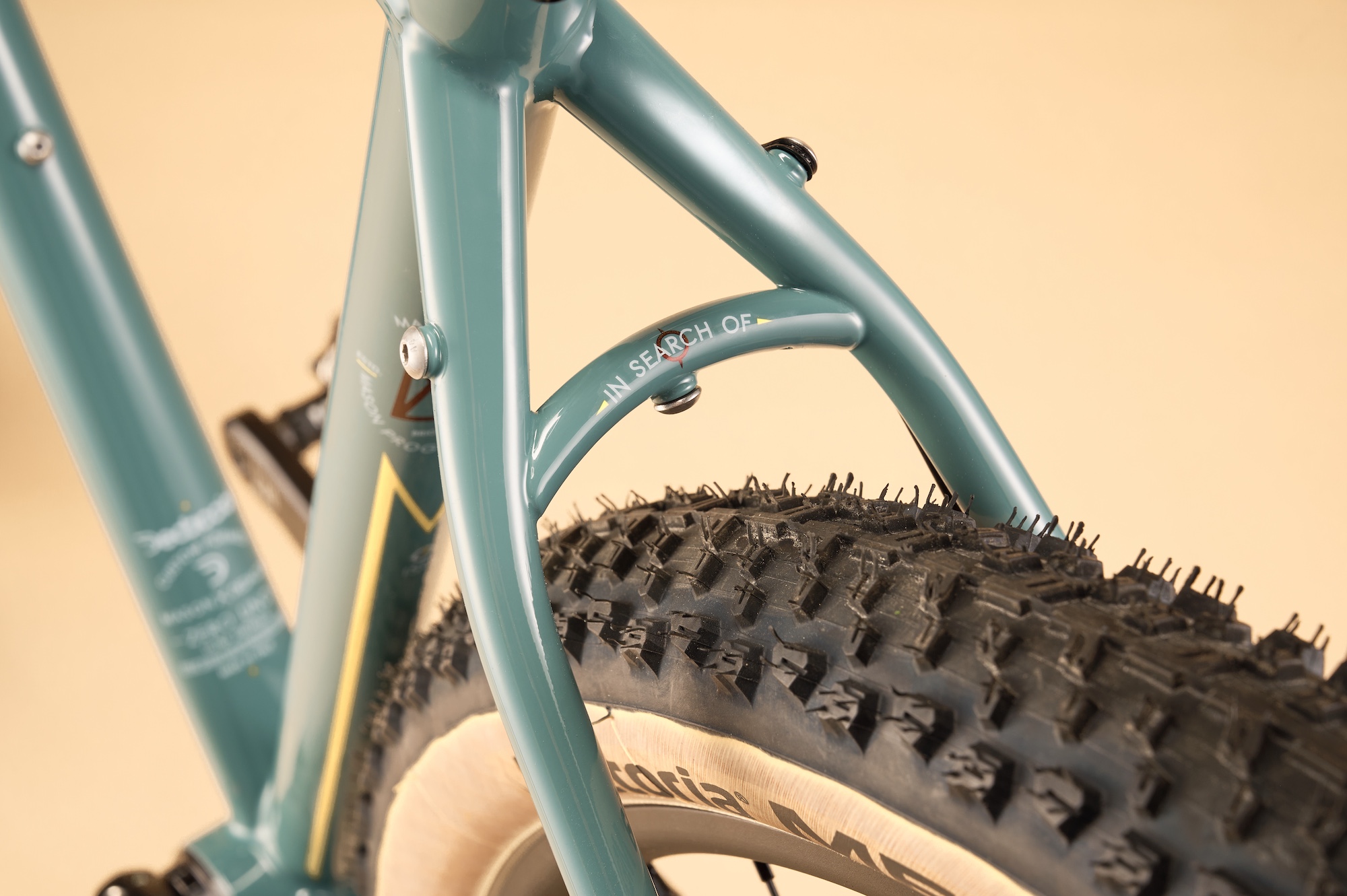
(Image credit: Future)
The frame is built in Padau, Italy by specialists who came recommended by Colombus tubing and have previously worked with De Rosa. All but the seat tube are made Dedacciai Zero, custom formed for Mason. The seat tube is Reynolds UK 853 steel, chosen as it’s the toughest material with which to make a thin tube to accomodate the 31.6mm seat pin.
There’s no doubt in my mind that this is the best material for a bike like this. While I never ventured far from home, if you were riding across continents (lucky you), you can do so safe in the knowledge that steel can both take a few knocks and be repaired in any workshop in the world by a competent mechanic with some welding gear.
The bike came with a mix of Shimano GRX and Deore components, including Deore 165cm cranks and a 1X 32×10/51 cassette. The GRX rear mech is UDH while the disc rotors are 180 up front and 160 at the rear.
Unique to Mason is the Shutter fender bolted to the fork crown. This keeps mud from flicking up around the bars and headset, and with mounting straps it can hold up to two kilos of kit. It’s a bit of a squeeze to load that and have a bar bag in place, but it can be done – depending on the size of your bar bag. I found my Alpina bar bag was too deep to fit much, if anything, underneath. Mason also has a small steel rack that can be specced in this position that holds a little more and has light mounts.
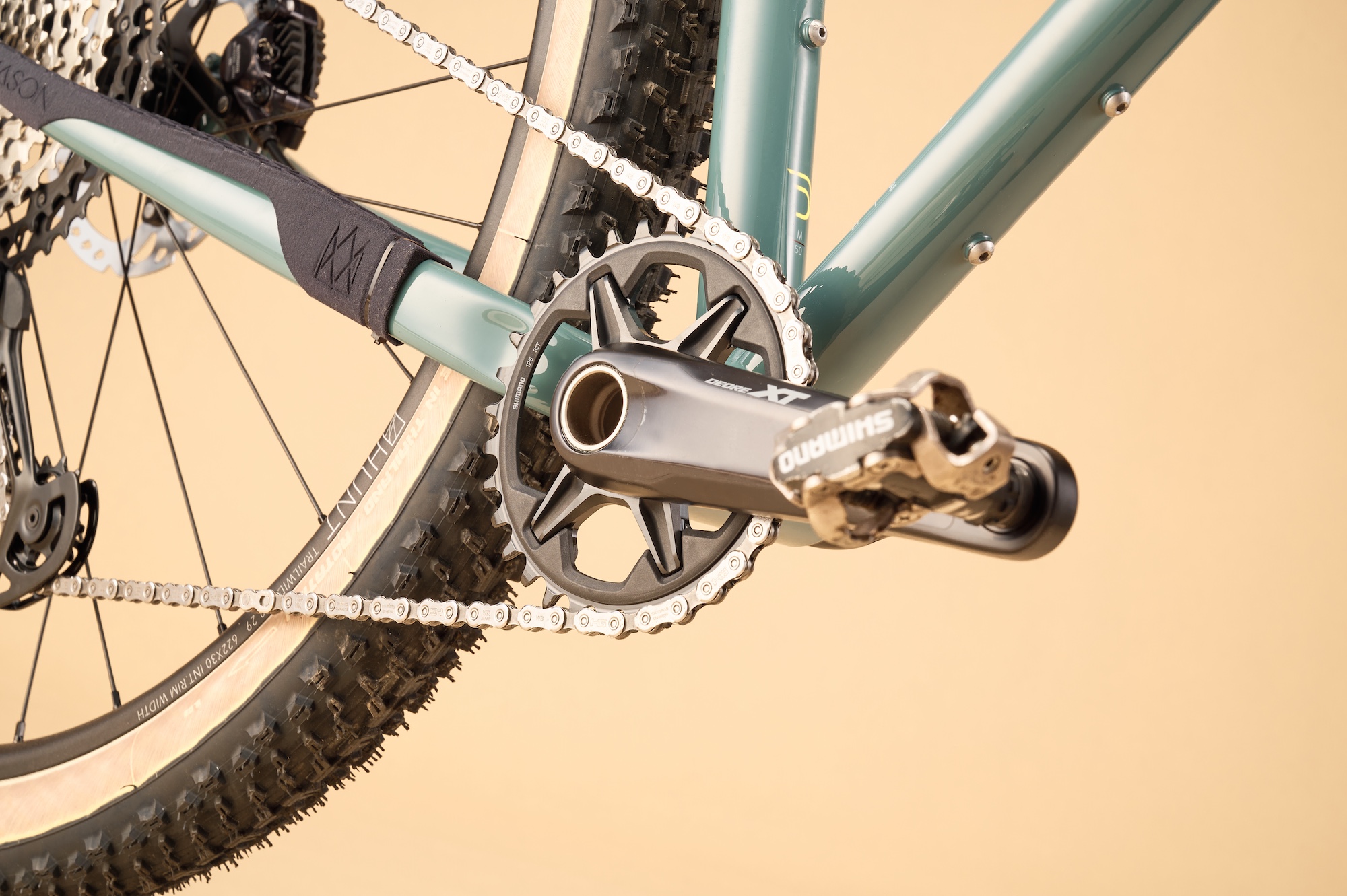
(Image credit: Future)
Mason ISO2 – The Ride
My first ride came as a bit of a shock. Out of my street, a quick left and a right takes me straight up onto the North Downs with a gradient that hits 20% in places. It’s not a fast ascent on any bike, but boy did this feel slow. ‘Am I actually moving forwards’ slow.
Increasing tyre pressure to around 50psi helped on subsequent rides, but the width and tread of the Mezcals means long road climbs are a real slog on this bike. On previous gravel bikes I’ve tested I’ve swapped the tyres out for a file tread, like the Panaracer Gravel King, but the 30mm internal rim width on these Hunt wheels means it’s MTB tyres only for the ISO, limiting tyre choice.
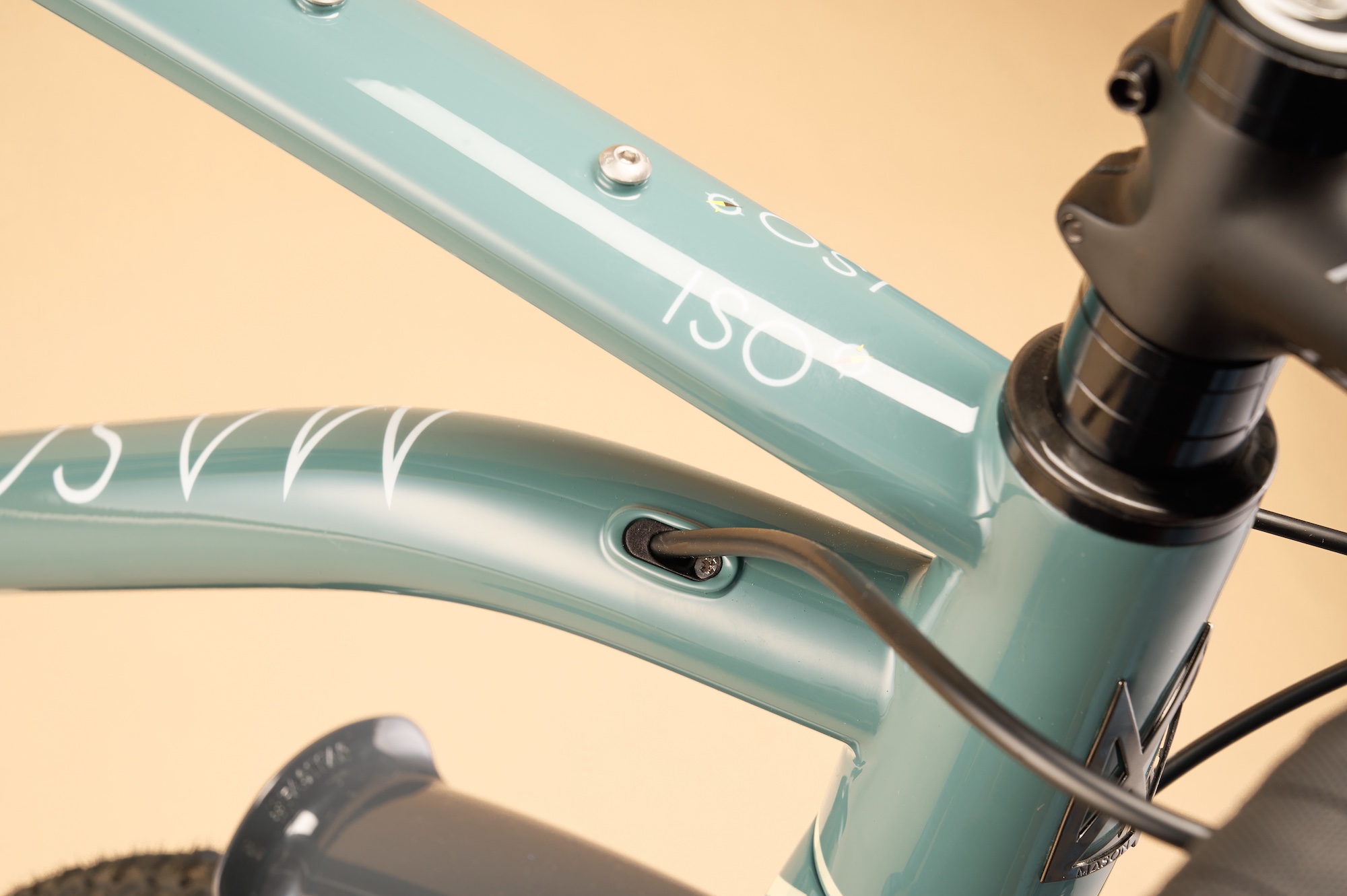
The steel frame is Italian made
(Image credit: Future)
I started to question the spec. Rolling along brideways or over fields, they were fine, but not noticeably better than a set of gravel tyres on 700c rims. It wasn’t until I hit a steep, loose, rooty climb that I discovered the benefit of this set up. These wheels roll over almost anything. Rooty step-ups, loose gravel in a washed out ditch, even the more gnarly descents were made noticeably easier. There was almost nothing that stopped them. At least nothing I was brave enough to tackle.
The high, upright riding position combined with slack head tube (69 degrees) only added to the ISO’s sure-footedness. Meanwhile the nine centimetre stem and short reach gave me a sense of nimbleness to the steering. A superb combination over difficult terrain.
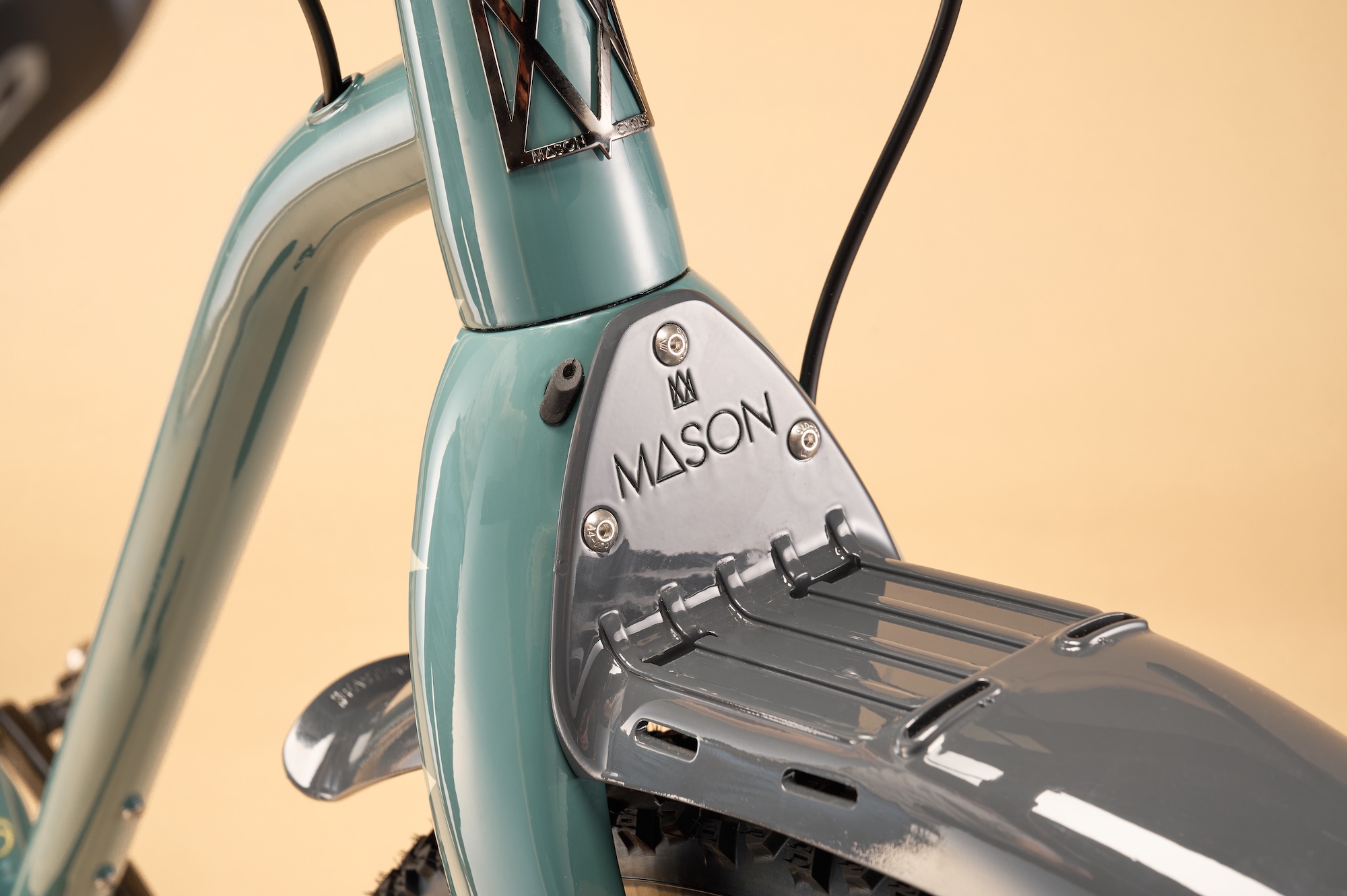
The Shutter fender can hold up to two kilos of kit
(Image credit: Future)
Conclusion
Some people are now using gravel bikes as their winter bikes, which makes perfect sense. They’re fast enough to keep up with a group and offer a bit more robustness on small lanes or back roads strewn with gravel, leaves and plagued with broken surfaces. However, this isn’t that bike. The ISO2 is made for proper exploration.
It’s a Toyota Land Cruiser to your Range Rover Evoque. A true off road machine that gave the impression it could handle anything I could throw at it. If you’re into gravel racing the Mason Bokeh is better, but if you’re lucky enough to have the time and freedom to head off into the unknown and want a bike that’s up to the challenge, you won’t go far wrong.
